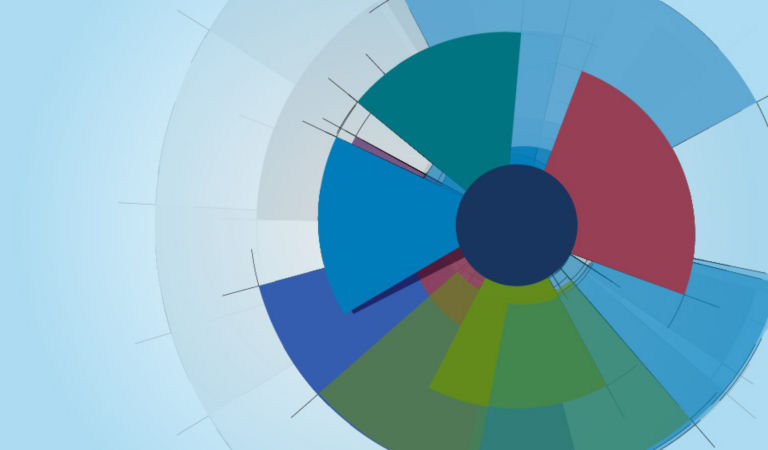Equities
Global equities (+1.8%) rose in August, ending the month with a 16.8% gain year to date. Exacerbated by an abrupt unwinding of the Japanese yen carry trade, equities fell precipitously at the beginning of August amid an uptick in recession risks and fears of excessively restrictive monetary policy in the US. However, markets rebounded amid optimism that the US economy can achieve a soft landing. Federal Reserve (Fed) Chair Jerome Powell cited an impending rate cut during his Jackson Hole Economic Symposium speech stating, “the time has come for policy to adjust.” Against a backdrop of declining inflation and softening global economic growth, monetary policy easing gathered pace in August as the central banks of England, Sweden, New Zealand, and Mexico lowered interest rates. The Bank of Japan (BOJ) faces a higher bar to raise interest rates in October after its rate hike in July destabilized markets and caused a sharp spike in the yen. Global economic data was mixed, highlighted by broad signs of cooling inflation across the globe, tepid growth in Europe hindered by weak manufacturing in Germany, and a softening US labor market. Geopolitical risks remained highly elevated; the war between Ukraine and Russia escalated after Ukrainian forces breached the Russian town of Kursk, while the humanitarian crisis in Gaza continued to destabilize the region.
US
US equities (+2.4%) finished higher in a turbulent month. Stocks plummeted in the first three trading days of August after deteriorating labor market indicators triggered recession fears and exacerbated concerns that the Fed has waited too long to lower interest rates. However, comments from Fed Chair Powell and economic data released in August did not reveal signs of a rapidly slowing economy, while the Bank of America Global Fund Manager Survey showed that 76% of investment managers believe that the US will achieve a soft landing. Powell set the stage for lower interest rates in September, indicating that inflation has declined significantly, supply constraints have normalized, and labor markets are no longer overheated. The Fed’s preferred inflation gauge — the core Personal Consumption Expenditures Price Index — held steady at 2.6% in July and grew only 1.7% on a three-month annualized basis, the slowest pace this year. Current pricing suggests that markets have high expectations for three cuts of 25 basis points (bps) before the end of the year. According to FactSet, of the 93% of companies in the S&P 500 Index that had reported second-quarter earnings, the blended year-over-year earnings growth rate for the index was 10.9%, well above the 10-year average of 8.4%.
Economic data released during the month was mixed. The labor market slowed considerably in July; nonfarm payroll growth of 114,000 was below the consensus forecast of 175,000, unemployment unexpectedly climbed to a nearly three-year high of 4.3%, and average hourly earnings rose at the slowest annual pace since May 2021. While layoffs remained relatively low, the upward trend in continuing jobless claims suggested that employment is harder to find. Consumer spending was surprisingly resilient in July, although economic uncertainty, a weakening labor market, and high interest rates restrained discretionary purchases and posed headwinds to purchasing in the months ahead. Headline retail sales growth of 1.0% was well above expectations, boosted by a sharp increase in auto sales, while personal spending on goods and services rose 0.5%, from 0.3% in June. However, personal income growth was much more sluggish, and the savings rate slipped to 2.8% — the second slowest pace since 2008. The Conference Board’s Consumer Confidence Index advanced to a six-month high in August as more upbeat views of the economy and inflation offset weaker labor market sentiment. Lower mortgage rates aided new- and existing-home sales, but record-high prices continued to constrain home buying.
The manufacturing sector contracted at a moderate pace in August, with the Institute of Supply Management (ISM) Manufacturing Index improving modestly to 47.2. After an exceptionally large decline in June, the ISM Services Index rebounded to 51.4 in July, allaying fears of a sharp economic slowdown. The increase was driven by a sizable improvement in business activity, along with gains in new orders and employment. The National Federation of Independent Businesses Small Business Optimism Index rose to 93.7 in July — its fourth straight monthly gain and the highest level since February 2022 — but remained significantly below the long-term average of 98.
Within the S&P 500 Index (+2.4%), nine of the 11 sectors posted positive results for the month. Consumer staples (+5.9%) and real estate (+5.8%) were the best-performing sectors. Health care (+5.1%) rose, as pharmaceuticals (+9.5%) and health care equipment & supplies (+7.7%) contributed to the sector. Energy (-1.7%) was the worst-performing sector. Consumer discretionary (-1.0%) also underperformed, led lower by broadline retail (-4.4%) and automobiles (-5.6%).
Europe
European equities (+1.3%) increased in August. Economic data was mixed amid progress toward lower inflation and concerns about lackluster growth in the eurozone economy, particularly in Germany. The region’s business activity modestly strengthened in August; the HCOB Flash Eurozone Composite Purchasing Managers’ Index (PMI) rose to 51.2 in August, from 50.2 in July, driven by a solid and accelerating expansion in the services sector, which was aided by a temporary boost in French services activity due to the Paris Olympics. Eurozone employment was fractionally lower, ending a seven-month sequence of expansion. Against a mixed economic backdrop, eurozone headline inflation fell sharply to a three-year low of 2.2% in August, from 2.6% in July, while core inflation was stable at 2.8%. The Bank of England and Sweden’s Riksbank lowered interest rates, Norway’s Norges Bank left policy unchanged, and comments from European Central Bank officials suggested that policymakers are poised to continue easing rates in September. Second-quarter earnings for companies in the STOXX 600 Index are forecast to increase by 3.0% from a year earlier, according to LSEG. Geopolitical tensions remained heightened, with Ukraine’s surprising incursion into Russian territory marking a significant escalation in the war.
Europe’s manufacturing sector continued to contract in August; the HCOB Eurozone Manufacturing PMI was unchanged at 45.8 as new orders fell at the sharpest rate this year, leading to accelerated contractions in input purchasing, employment, and inventories. Business confidence slipped to a five-month low. The rate of input cost inflation eased to an eight-month low, but the inflation of output prices quickened in August. The HCOB Flash Eurozone Composite PMI revealed that services sector activity in August grew at a faster pace, supported by a rise in new business. The European Commission’s Economic Sentiment Indicator edged up to 96.6 in August; industry confidence improved slightly, while consumer confidence was broadly stable.
Germany’s (+2.4%) manufacturing sector worsened in August, as the rates of decline in new orders, purchasing activity, and employment accelerated. The ZEW Indicator of Economic Sentiment plummeted to a seven-month low, and the assessment of the current economic situation decreased to a four-month low. In the UK (+1.0%), the Bank of England lowered interest rates for the first time since 2020, to 5%, after core inflation cooled, notably within the services sector. The UK economy grew 0.6% in the second quarter, driven by increases in gross capital formation, government consumption, and household spending. In August, the S&P Global Flash UK PMI Composite Output Index showed that manufacturing production increased at a sharp pace, and the services sector signaled an acceleration in growth. In France (+1.5%), President Emmanuel Macron refused to name left-wing candidate Lucie Castets as prime minister and bolstered his efforts to assemble a coalition of moderate politicians.
Pacific Basin
Pacific Basin equities (-1.3%) ended the month lower. In Australia (+0.4%), interest rates were held at a 12-year high, with Reserve Bank of Australia (RBA) Governor Michele Bullock indicating that market expectations for a rate cut by the end of the year don’t align with the bank’s forecasts. Wage growth in the second quarter advanced 4.1% from a year ago, matching the first quarter’s elevated pace and reflecting a still-tight labor market and persistent inflation pressures. The Consumer Price Index climbed 3.5% in July from a year earlier, down from 3.8% in June, and core inflation also cooled. However, the results are not expected to sway the RBA’s hawkish stance. Retail sales in July were flat following two months of solid gains.
In Japan (-2.7%), the BOJ’s Deputy Governor Shinichi Uchida pledged to refrain from raising interest rates in unstable market environments after the BOJ’s surprising rate hike on July 31 triggered historically high financial market volatility in the country. Japanese stocks plunged into bear market territory in early August before sharply rebounding, and currency markets fluctuated wildly as investors unwound yen carry-trade positions. BOJ Governor Kazuo Ueda signaled that movements in the yen could impact inflation projections, thus interest rates, but reaffirmed his resolve to tighten monetary policy if inflation remains on a sustainable path to the bank’s 2% target. He also downplayed the significance of BOJ policy in the recent market turmoil, citing concerns about the US economy as the key catalyst. In July, Japan’s core CPI accelerated to 2.7% from a year ago, up from 2.6% in June, but a narrower measure of core inflation (excluding fresh food and energy costs) that is closely monitored by the BOJ dipped to 1.9%, from 2.2%. Following a 2.3% contraction in the first quarter, second-quarter annual GDP growth rebounded to 3.1%, well above the 2.3% consensus estimate, providing optimism that the long-awaited recovery in personal spending may be underway following the largest wage increases in more than three decades. Japanese Prime Minister Fumio Kishida announced that he won’t run for a second term as leader of the long-ruling Liberal Democratic Party in September.
In Singapore (+3.2%), lower services costs brought annual core inflation down to 2.5%, well below expectations of 2.9%, providing more scope for the Monetary Authority of Singapore to ease policy later this year. Second-quarter GDP expanded 2.9% from a year ago, prompting the Ministry of Trade and Industry to forecast that 2024 GDP will grow at the higher end of its 1% – 3% forecast range. New Zealand’s (+0.1%) central bank reduced interest rates much sooner than expected, by 25 bps, as concerns about persistent inflation were alleviated by rising unemployment and a weak economy that is flirting with a third recession in less than two years.
Emerging Markets
Emerging markets (EM) equities (+0.4%) rose slightly in August, with Latin America leading the gains, followed by Europe, the Middle East, and Africa (EMEA) and Asia.
Latin America (+4.2%) finished the month sharply higher. In Brazil (+7.0%), expectations of solid second-quarter GDP growth along with accelerating inflation increased the odds of higher interest rates and some degree of fiscal austerity. Mexico’s (-0.1%) central bank cut interest rates by 25 bps, with policymakers warning of the downside risks to economic growth and prolonged weakness in the economy since the end of last year. The government halted relations with US and Canadian embassies after ambassadors criticized President Andrés Manuel López Obrador’s proposed judicial reforms that could weaken democratic checks and balances. In Chile (+0.3%), a draft bill to expand electricity subsidies and increase fines for power outages threatened to upend investments in the country’s burgeoning renewable energy market.
In EMEA (+0.2%), Saudi Arabia (+0.7%) advanced after Fed Chair Powell confirmed that interest rates would decline in September. Inflation held steady at 1.5% in July, remaining at the lowest level since December. In South Africa (+1.1%), inflation dropped more than forecast to a three-year low in of 4.6% in July, firming expectations for an interest-rate cut in September. In the UAE (+2.8%), interest rates were held at 5.4%, even as inflation in July dipped to 3.3%, the lowest level of the year and down from 3.9% in June.
In Asia (+0.1%), China’s (+0.6%) new-home prices rose at a slower pace in August as the property sector continued to struggle despite a slew of stimulus measures. Economic data showed a mixed economic landscape, with retail sales rising above expectations in July and industrial production slowing faster than forecast. Core CPI advanced 0.4%, the smallest increase since January, which continued to fuel concerns about domestic demand and favored further monetary policy easing. Taiwan’s (+0.7%) defense spending is set to outpace its GDP growth in 2025 as the military threat from China grows. The government announced an ambitious goal to achieve a trillion-dollar economy by 2028 and annual economic growth of 2.8% – 3.6% for the next four years. India’s (+1.3%) GDP expanded at a slower-than-expected annual pace of 6.7% in the second quarter due to lower government spending during the election, but growth still outpaced other major economies. Annual inflation dropped to nearly a three-year low of 3.5% in July. However, the fall was largely due to a high base effect, suggesting the decline was temporary. The central bank left interest rates unchanged in the hope of reducing inflation.
Fixed Income
Mounting concerns over weakening US economic growth contributed to a sharp rise in market volatility in early August, although stability returned after more constructive global economic releases and a more supportive stance from the Fed. Most fixed income sectors generated positive excess returns over duration-equivalent government bonds.
US economic data releases were mixed. Consumer credit increased due to higher auto and student loans. According to the Conference Board, consumer confidence outpaced expectations. An increase in exports of industrial supplies contributed to a narrower US trade balance. US jobless claims fluctuated modestly but remained rangebound, while continuing claims moved higher. The Manufacturing PMI fell below estimates and slid further into contractionary territory. Power outages and facility closures in eastern Texas adversely impacted industrial production amid hurricane activity. Conversely, the services sector gained on strength in new orders and prices paid. Demand for transportation equipment drove durable goods orders higher. Pending home sales plunged as affordability remained an issue for homebuyers. In the eurozone, both core and headline CPI edged lower year over year, while the HCOB Manufacturing PMI receded deeper into contractionary territory. Germany’s ZEW survey showed the largest decline in economic expectations in two years. In the UK, the S&P Global Manufacturing PMI beat expectations, while house prices fell as high borrowing costs stalled growth. Canada’s annual inflation dropped to a 40-month low. Australia’s Westpac-Melbourne Institute Leading Index declined, indicating subtrend economic growth. In China, consumer inflation edged up slightly from a year ago due to extreme weather and flooding disruptions, while industrial profits rose year over year amid higher overseas orders. Japan’s industrial production rebounded, driven by demand for semiconductor equipment and electrical devices.
The paths to policy normalization among major central banks continued to diverge across countries and regions. Fed Chair Powell signaled imminent rate cuts at the Jackson Hole Symposium. The Bank of England and the Reserve Bank of New Zealand reduced interest rates for the first time in over four years and flagged more easing over the coming months. The Riksbank cut rates by 25 bps and sketched out more policy accommodation than previously expected in response to weak economic growth. BOJ Governor Ueda reaffirmed that more rate hikes are on the table if inflation remains on track to hit the 2% target.
Most global sovereign bond yields moved lower across developed markets, mainly driven by softening labor market data in the US and expectations that the Fed will start cutting rates in September. In Latin America, central banks struggled to balance rate cuts with reaccelerating inflation and currency weakness. The Bloomberg TIPS Index delivered a total return of 0.78%, and the 10-year breakeven inflation rate decreased by 8 bps to 2.15% during the month.
Global credit bonds outperformed duration-equivalent government bonds. Within the securitized sectors, agency mortgage-backed and commercial mortgage-backed securities outperformed, while asset-backed securities performed in line with duration-equivalent government bonds. Within EM, local markets debt (+3.07%) outperformed external debt (+2.32%), in US-dollar terms. Spread narrowing and a decrease in US Treasury yields contributed favorably to external debt performance. Appreciation in EM currencies drove positive performance within local markets, and EM rates also had a positive impact.
Currencies
The US dollar broadly weakened against major developed market currencies, driven by expectations that the Fed will cut rates in September. Among the G10, high-beta currencies (New Zealand dollar, Swedish krona, and Australian dollar) accelerated higher. The unwinding of the yen carry trade and safe-haven demand boosted the Swiss franc and Japanese yen. European currencies (euro, British pound) appreciated against the US dollar, primarily driven by the repricing of Fed rate-cut expectations but also due to reduced domestic political turmoil. Within EM, many high-yielding currencies, including the Mexican peso and Turkish lira, depreciated amid the global unwinding of currency trades.
Commodities
Commodities (-1.7%) ended lower in August. Energy was the primary detractor during the period, while industrial metals, precious metals, and agriculture & livestock contributed positively.
Energy (-4.2%) fell during the month. Heating oil (-7.0%), gasoline (-6.8%), gas oil (-5.6%), and crude oil (-3.5%) continued to decline following China’s fourth consecutive month of disappointing manufacturing data, which heightened concerns about the country’s economic growth. The oil market remained volatile, with persistent uncertainty over supply disruptions due to ongoing geopolitical tensions and conflicts. Milder weather forecast in the Northeast US, combined with strong production and ample storage, led to a decrease in natural gas (-1.5%) demand during the period.
Industrial metals (+3.3%) rose. Zinc (+8.3%) prices surged on rising demand from the automotive and transportation sectors in China, as companies shifted to more environmentally friendly materials. Tightening supplies due to China’s export tax on primary aluminum, high energy costs in Europe, and ongoing global shipping disruptions buoyed aluminum (+7.9%) prices. Nickel (+1.0%) benefited from strong demand from China, driven by continuing growth of the battery-powered electric vehicles segment. Copper (+0.1%) rose modestly as a strike at the mining company BHP raised concerns about the supply of the metal. Expected interest-rate cuts by the Fed also supported copper prices. Lead (-1.8%) slid as a Shanghai Metals Market survey showed an uptick in primary lead inventory.
Precious metals (+2.4%) rose. Gold (+2.6%) prices continued to increase amid the growing likelihood of interest-rate cuts by the Fed, which promoted investor demand for the safe-haven metal. Silver (-0.3%) prices reacted negatively to the July US CPI data released during the month, which showed an increase of 0.2% on a seasonally adjusted basis.
Agriculture & livestock (+0.6%) ended higher. Challenges in disseminating information on preventing the spread of the cacao swollen shoot virus in a key growing region kept cocoa (+17.9%) prices high, as the incurable disease continued to compel farmers in Côte d’Ivoire to remove infected trees. Lean hogs (+8.8%) gained as wholesale pork prices remained firm. Coffee (+8.7%) advanced as robusta coffee prices reached a record high due to adverse weather in Vietnam and Indonesia, which significantly impacted crop production and quality. Feeder cattle (-6.5%) and live cattle (-3.9%) prices fell amid higher feeding costs from rising corn prices. Soybeans (-1.8%) were lower on plentiful supplies from Brazil and Argentina despite previous weather setbacks, and prices were down further after the US Department of Agriculture increased global crop prospects.
















Equity Market Outlook
Continue readingBy
Andrew Heiskell
Nicolas Wylenzek